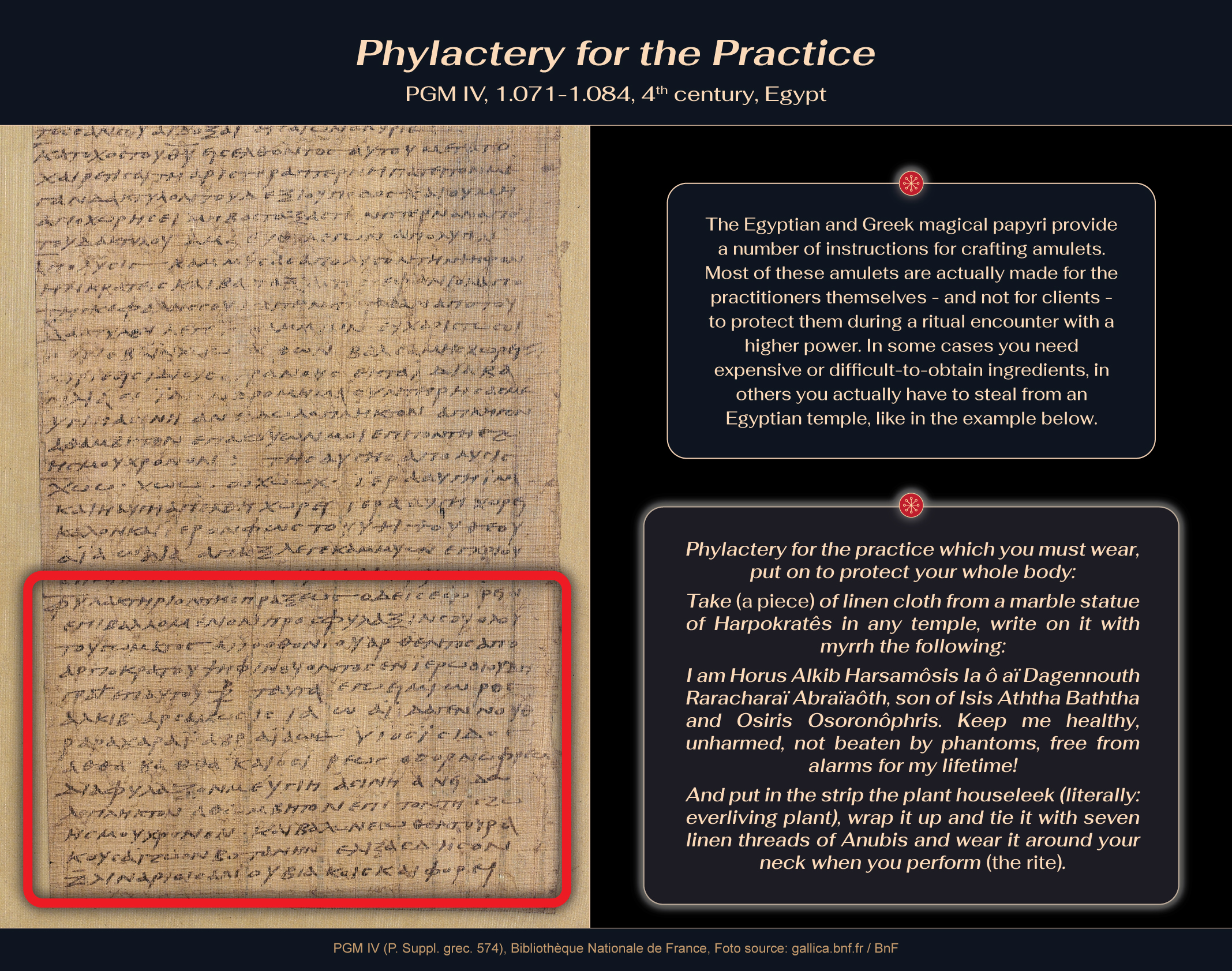The Egyptian and Greek magical papyri provide a number of instructions for crafting amulets. Most of these amulets are actually made for the practitioners themselves – and not for clients – to protect them during a ritual encounter with a higher power. In some cases you need expensive or difficult-to-obtain ingredients, in others you actually have to steal from an Egyptian temple, like in the example below.
Phylactery for the practice which you must wear, put on to protect your whole body:
Take (a piece) of linen cloth from a marble statue of Harpokratês in any temple, write on it with myrrh the following:
I am Horus Alkib Harsamôsis Ia ô aï Dagennouth Raracharaï Abraïaôth, son of Isis Aththa Baththa and Osiris Osoronôphris. Keep me healthy, unharmed, not beaten by phantoms, free from alarms for my lifetime!
And put in the strip the plant houseleek (literally: everliving plant), wrap it up and tie it with seven linen threads of Anubis and wear it around your neck when you perform (the rite).
PGM IV, 1.071-1.084, 4th century, Egypt, photo: PGM IV (P. Suppl. grec. 574), Bibliothèque Nationale de France, Foto source: gallica.bnf.fr / BnF

Become a patron for more infographics, research and videos: https://www.patreon.com/ancientmagic
